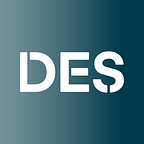Essentials for workplace well-being: Protection from harm
In 2022, the U.S. Surgeon General issued the Framework for Workplace Mental Health and Well-being in response to impacts of the pandemic. “The COVID-19 pandemic has changed the nature of work, and the relationship many workers have with their jobs,” the framework notes. “The link between our work and our health has become even more evident.”
The goal of the framework is to generate conversation about revitalizing the workplace. The framework describes these five essentials for reimagining workplaces:
In a five-part series, we’ll take a look at how these essentials relate to your workplaces and the work you do. In this article, we focus on protection from harm.
Mental health workplace landscape
The American Psychological Association (APA) and a 2021 Mindshare report found that:
- 81% of workers said they’ll be looking for workplaces that support mental health.
- 84% said their workplaces contributed to at least one mental health challenge.
- 76% report at least one symptom of a mental health condition, an increase of 17% in the last two years.
Among employees, workplace concerns cover a wide range of issues:
- Stress
- Conflict
- Burnout
- Performance issues
- Job transition, layoff, termination
- Bullying, mistreatment, harassment
The APA has found that “seven in ten workers reported that their employer is more concerned about the mental health of workers than before.” More employers are considering workplace well-being as essential, not optional.
Essential 1: Protection from harm
The first workplace well-being essential, protection from harm, acknowledges that the human need for safety and security are foundational to human well-being. In the workplace, this looks like:
- Enabling adequate rest
- Normalizing and supporting mental health
- Prioritizing physical and psychological safety
- Operationalizing norms, policies, and programs to increase diversity, equity, inclusion (DEI), and accessibility
Thinking about all the other tasks supervisors must accomplish, here’s some actionable ways you can address employee needs to feel protected from harm.
Enable rest
- Learn about the causes of burnout and the role of supervisors and managers in preventing burnout.
- Support time off by working with employees to provide coverage during their time of leave. This helps employees know that you value both the work they do and their human need for rest.
Normalize and support mental health
- Share the EAP employee newsletter and webinar opportunities with your team. Encourage employees to subscribe.
- Regularly talk about mental health issues and EAP resources for employees. An easy way to do this is to subscribe to the EAP supervisor newsletter.
- Encourage employees to sign up for an EAP orientation webinar. Include EAP information in your new employee orientation procedures and presentations.
Prioritize physical and psychological safety
- Know your employer’s policies and procedures on workplace safety.
- Learn ways to support an employee experiencing thoughts of suicide.
- Educate yourself. The EAP has an on-demand webinar for psychological safety. The Department of Enterprise Services also has a catalog of courses on physical and psychological safety.
Operationalize DEI and accessibility
- Develop awareness and understanding of “othering.” Cultivate belonging.
- Learn what your colleagues are doing to change organizational culture, both within and outside your agency.
- Provide and support educational opportunities for your employees. Opportunities could include required and recommended trainings, or something less formal, like sharing resources with your team.
Leaders play an important role in supporting their employees. The EAP provides specific services to supervisors, managers and HR leaders to help them in their efforts to provide that support. To use these services, call the EAP at 877–313–4455 or request an organizational consultation.
Subscribe to the EAP supervisor newsletter to get articles and updates by email.
The Washington State Employee Assistance Program (EAP) is a free, confidential program created to promote the health, safety and well-being of public service employees and their household adult family members. The EAP is available to provide confidential and expert consultation in a variety of areas. Reach out to EAP online or by calling 877–313–4455. To find out if the Washington State EAP serves your agency or organization, contact your supervisor or human resources department.
Links to external websites are provided as a convenience. The Employee Assistance Program and the Department of Enterprise Services do not endorse the content, services, or viewpoints found at these external sites. Information is for general informational purposes only and is not intended to replace the counsel or advice of a qualified health or legal professional. For further help, questions, or referral to community resources for specific problems or personal concerns, contact the EAP or other qualified professional.
